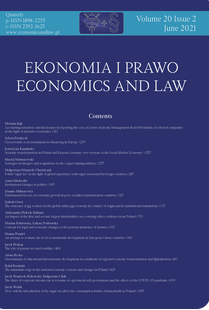An attempt to evaluate the level of sustainable development in European Union countries
An attempt to evaluate the level of sustainable development in European Union countries
Author(s): Hanna PondelSubject(s): National Economy, Energy and Environmental Studies, Economic development, EU-Accession / EU-DEvelopment
Published by: Wydawnictwo Naukowe Uniwersytetu Mikołaja Kopernika
Keywords: sustainable development; European Union; level of sustainable development; taxonomic method;
Summary/Abstract: Motivation: Sustainable development is a concept of development that arouses keen interest of various entities, is unprecise in many of its assumptions, undoubtedly applicable for the contemporary civilisation as well as the future generations, with effects difficult to measure and interpret, and constitutes a considerable research challenge. The research on the sustainability level of particular countries or regions have still been insufficient, as well as, due to varying research methods and research scopes, difficult to compare and causing difficulties in clear determination of the scale and progress in implementing the assumptions of this concept of development. Aim: To evaluate the level of sustainable development in European Union countries in 2009 and 2018 with the application of the taxonomic method. Results: In the vast majority of European Union countries, the value of the synthetic sustainable development indicator was higher in 2018 as compared to 2009. Only in the case of three countries the value decreased. The improvement of the indicator was driven mainly by the economic aspect. When evaluating the sustainable development level of European Union countries in 2009 and 2018, it may be claimed that each time the majority of countries noted a low level of sustainable development: a low and very low synthetic sustainable development indicator was demonstrated by 67% and 56% respectively of the entities under evaluation. In the group of countries with a very high aggregate indicator, the changes in 2018 as compared to 2009 were not significant; only the Netherlands and Slovenia were in the group of countries with a high synthetic sustainable development indicator (in 2018 — with a very high indicator). Certainly, it should be seen as positive that the group of countries with a very low aggregate indicator shrank considerably: from 17 in 2009 to eight in 2018. Among the countries representing that group in 2018 were only those which belonged to it also in 2009. As results from the conducted analysis, the countries which have attained a very high or high level of sustainable development maintain this status
Journal: Ekonomia i Prawo. Economics and Law
- Issue Year: 20/2021
- Issue No: 2
- Page Range: 383-399
- Page Count: 18
- Language: English

